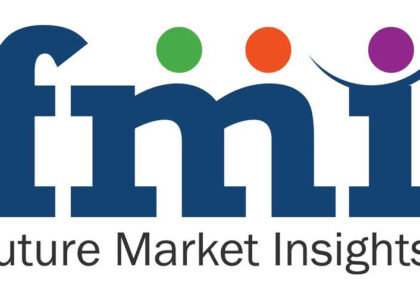
The global fight against cancer is intensifying, and with it, the demand for innovative treatments is soaring. One of the most promising advancements in oncology is the use of PARP inhibitors, a class of drugs that target and disrupt the DNA repair mechanisms of cancer cells. Recent market analyses reveal that the global PARP inhibitor market, valued at USD 6,279.90 million in 2024, is expected to experience exponential growth, reaching an impressive USD 16,153.50 million by 2034, with a Compound Annual Growth Rate (CAGR) of 8.70% over the next decade.
Precision Medicine Fuels Demand:
The expanding adoption of precision medicine and biomarker-driven treatment strategies has become a major catalyst for the growth of the PARP inhibitor market. These inhibitors are emerging as essential components of personalized cancer care, offering renewed hope for patients suffering from ovarian, breast, prostate, and pancreatic cancers, among others. By targeting cancer cells more accurately and reducing damage to healthy cells, PARP inhibitors have demonstrated their potential to enhance treatment outcomes, especially in patients with BRCA-mutated cancers.
However, the path to broader market adoption is not without challenges. High therapy costs, combined with regulatory hurdles, continue to be significant obstacles. In regions where healthcare infrastructure is underdeveloped or insurance coverage is limited, access to these life-changing therapies remains a major concern. Additionally, the lengthy approval processes for new drugs and lingering questions about long-term safety may impact both physician prescribing patterns and patient acceptance.
Emerging Opportunities and Market Trends:
Despite these challenges, the PARP inhibitor market is brimming with opportunities. One of the key trends reshaping the industry is the push to expand the use of PARP inhibitors beyond BRCA-mutated cancers. Collaboration between pharmaceutical companies and diagnostic firms to develop companion diagnostic tests is playing a crucial role in improving patient stratification and enhancing the value of these therapies. Such initiatives are paving the way for more precise and effective cancer treatment approaches.
Another major trend is the rise of combination therapies, where PARP inhibitors are used alongside other targeted agents or immunotherapies to increase efficacy and combat drug resistance. These combinations are showing significant promise in improving patient outcomes and broadening the scope of treatment. Moreover, advancements in artificial intelligence (AI) and machine learning (ML) are transforming drug discovery processes, accelerating the identification of new drug candidates and predictive biomarkers, further bolstering the market’s growth trajectory.
A Bright Future for PARP Inhibitors in Cancer Treatment:
As the global PARP inhibitor market continues to grow, it remains at the forefront of innovation in cancer treatment. Precision medicine and evolving therapeutic strategies are driving this market forward, unlocking new possibilities in personalized healthcare. Despite challenges, the potential for PARP inhibitors to revolutionize cancer care is undeniable. With continued advancements in combination therapies, diagnostic tools, and AI-powered drug discovery, the future holds tremendous promise for improved patient outcomes and long-lasting hope for individuals battling cancer worldwide.
The global PARP inhibitor market is poised to be a critical player in the ongoing fight against cancer, offering innovative solutions that align with the future of personalized medicine.
Global Market Insights:
- United States: Expected to see steady growth with a CAGR of 1.2% through 2034.
- United Kingdom: Projected to rise at a CAGR of 5.10% through 2034.
- China: Likely to expand at a CAGR of 3.40% through 2034.
- Japan: Expected to exhibit a measured CAGR of 1.6% through 2034.
- South Korea: Anticipated to grow at a CAGR of 2.8% through 2034.
“A lucrative opportunity lies in the development of next-generation PARP inhibitors with improved efficacy and safety profiles. Companies are investing in research and development efforts to enhance the therapeutic potential of existing PARP inhibitors and overcome resistance mechanisms,” said Sabyasachi Ghosh, Associate Vice President at Future Market Insights (FMI).
Full Report on PARP Inhibitor: Explore the Latest Trends and Insights in Our Detailed Analysis!
Competitive Landscape:
The PARP inhibitor industry is characterized by intense competition, with established pharmaceutical companies and biotech firms vying for market dominance. Key players are focused on expanding their product portfolios through strategic collaborations, licensing agreements, and acquisitions. Partnerships with diagnostic companies to develop companion diagnostic tests are becoming increasingly common as biomarker-driven approaches gain traction.
The competitive landscape is further shaped by market access, reimbursement policies, and intellectual property rights. Companies are navigating complex regulatory environments to ensure broad patient access to their products, while also contending with patent litigation and intellectual property disputes.
Recent Developments:
- In April 2023, Johnson & Johnson gained the first European approval for its PARP combo, Akeega.
- In 2023, the FDA approved the combination of enzalutamide (Xtandi) and talazoparib (Talzenna) as the first treatment for select patients with metastatic castration-resistant prostate cancer.
- BDR Pharmaceutical introduced BDPARIB (RUCAPARIB) in 2021, India’s first affordable generic tablet for advanced ovarian and prostate cancer.
Key Players:
Major companies driving the market include AstraZeneca, GlaxoSmithKline, Merck & Co. Inc., AbbVie Inc., Clovis Oncology, Johnson & Johnson Services, Inc., Pfizer Inc., and several others. These companies are at the forefront of innovation, leveraging strategic partnerships to strengthen their competitive positions and accelerate the development of next-generation therapies.
Market Segmentation:
- By Drug Type: Olaparib, Niraparib, Rucaparib, Talazoparib
- By Indication: Ovarian Cancer, Breast Cancer, Prostate Cancer, Pancreatic Cancer
- By Distribution Channel: Hospital Pharmacies, Retail Pharmacies, Online Pharmacies
- By Region: North America, Latin America, Europe, East Asia, South Asia, Oceania, Middle East, and Africa
About Future Market Insights (FMI)
Future Market Insights, Inc. (ESOMAR certified, recipient of the Stevie Award, and a member of the Greater New York Chamber of Commerce) offers profound insights into the driving factors that are boosting demand in the market. FMI stands as the leading global provider of market intelligence, advisory services, consulting, and events for the Packaging, Food and Beverage, Consumer Technology, Healthcare, Industrial, and Chemicals markets. With a vast team of over 400 analysts worldwide, FMI provides global, regional, and local expertise on diverse domains and industry trends across more than 110 countries.
Contact Us:
Future Market Insights Inc.
Christiana Corporate, 200 Continental Drive,
Suite 401, Newark, Delaware – 19713, USA
T: +1-347-918-3531
For Sales Enquiries: sales@futuremarketinsights.com
Website: https://www.futuremarketinsights.com
LinkedIn| Twitter| Blogs | YouTube




